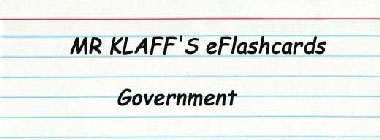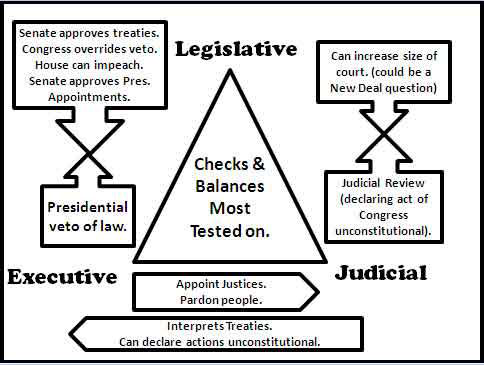|
|
|
 |
|
|
|
|
|
Definition: Checks and Balances Each branch looks over the shoulders of the other two to make sure there are no abuses of power. You need to know certain checks and balances of the branches of government. If the President (Executive Branch) doesn’t like a law, he can veto it. The Legislative Branch can then override that veto with a 2/3 vote. The President appoints federal jobs like Supreme Court justices, and the Senate approves these appointments. The President can make treaties, but the Senate must approve them. The Judicial Branch can strike down actions of both the President and Congress. Here is a graph of the most important checks to know about:
Click here for next flash card. Back to eFlashcard headquarters
|
|
|
mrklaff.com offers history flashcards for review of Global Studies (World History), US History, APUS History, AP World History, SAT II United States History, and SAT World History |
|
 |
 |
 |

|
 |



